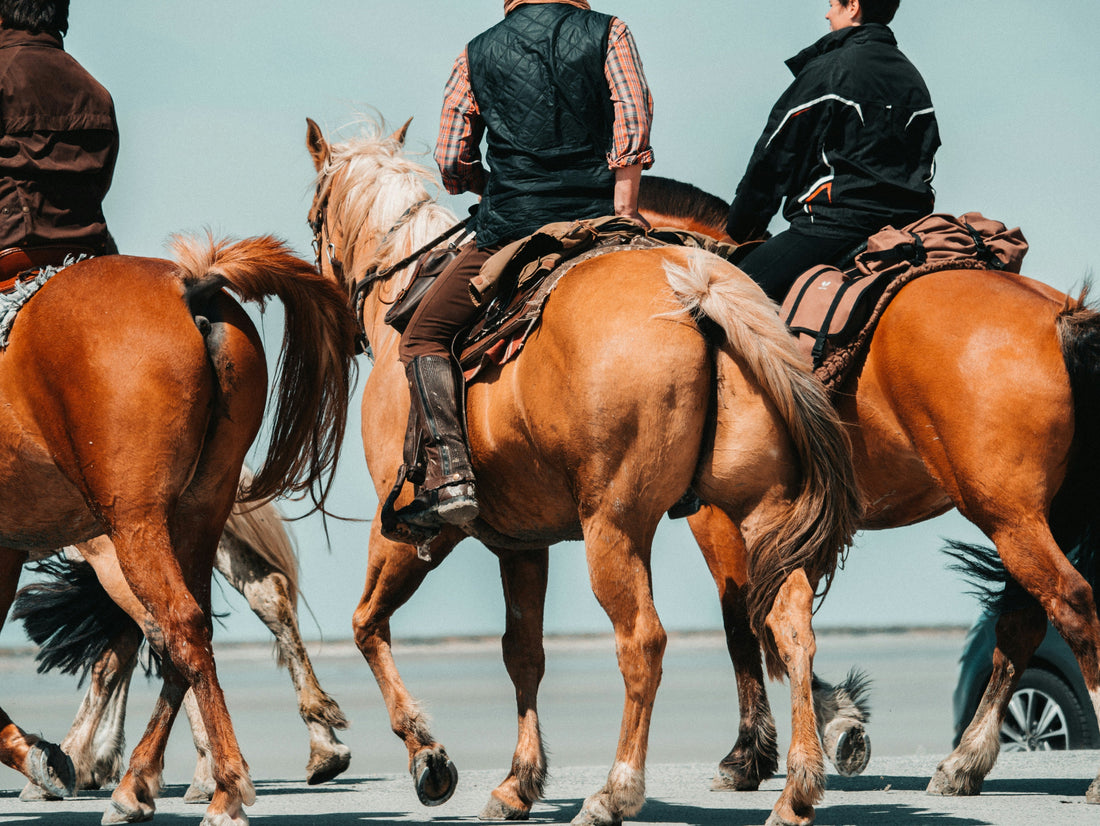When it comes to equestrian footwear, selecting the right boots is more than a matter of aesthetics—it’s a decision that affects your safety, comfort, and performance. Among the most common choices, polo boots and riding boots stand out for their unique designs, purposes, and features. Whether you’re gearing up for the polo field or other equestrian activities, understanding their key differences can help you make an informed decision that aligns with your needs. For a full breakdown of essential gear, check out our Essential Polo Equipment Guide.
This guide explores the distinctions between polo boots and riding boots, the benefits of each, and how to determine which pair is right for you.
What Are Polo Boots?
Polo boots are a specialized type of equestrian footwear crafted with the rigors of polo in mind. The sport involves high-speed riding, physical contact, and the risk of impacts from mallets, balls, or even other riders. As a result, polo boots are designed with protection and durability as top priorities.
Key Features of Polo Boots:
-
Sturdy and protective:
Polo boots are made from tough leather, often reinforced in areas like the ankle and calf. This provides added protection against mallet strikes, collisions, and falls. -
Knee-High Design:
These boots extend to the knee to safeguard the rider’s lower leg. The tall design also offers stability during intense play. -
Lace-Up or Buckle Closures:
Polo boots feature adjustable laces or buckles, allowing for a secure, customized fit. This ensures ankle support, which is essential during the fast, high-intensity movements characteristic of polo. -
Durable Construction:
Built to withstand heavy wear and tear, polo boots are made for competitive players who need reliable protection game after game.
To ensure your boots meet your specific needs, you may explore our blog on Tailored for You: Crafting Your Unique Pair of Polo Boots.
What Are Riding Boots?
Riding boots, in contrast, are designed for general equestrian activities. These include dressage, show jumping, trail riding, and other non-contact disciplines. While they offer less specialized protection than polo boots, they excel in comfort and functionality, enhancing the rider’s posture and performance in the saddle.
Key Features of Riding Boots:
-
Streamlined Shape:
Riding boots have a sleek design that allows for smooth leg movement and prevents interference with the stirrup. This design ensures better balance and control while riding. -
Variety in Styles:
- Tall Riding Boots: Knee-high riding boots are common in disciplines like dressage, where maintaining a polished look is essential.
-
Paddock Boots: Shorter, ankle-length boots are ideal for casual riding or groundwork.
-
Zipper or Pull-On Design:
Unlike polo boots, riding boots often include zippers or a pull-on style for convenience, making them easier to wear and remove. -
Lightweight and Flexible:
Riding boots prioritize comfort, featuring softer materials and lighter construction for prolonged wear during training or leisure riding.
Key Differences Between Polo Boots and Riding Boots
While both types of boots serve equestrians, their differences lie in their design, purpose, and functionality.
1. Purpose and Protection:
-
Polo Boots: These prioritize safety and resilience for high-impact sports like polo. Reinforced materials protect against mallet strikes, falls, and collisions.
-
Riding Boots: Designed to enhance posture, grip, and overall riding performance, these boots are more versatile and suited for non-contact activities.
2. Design and Features:
-
Polo boots often feature laces or buckles for a snug, adjustable fit. Their reinforced construction adds weight and bulk.
-
Riding boots are sleeker, with minimal fastenings, making them lighter and more flexible for comfort and style.
3. Durability:
-
Polo boots are heavier and built for durability, enduring the rigors of competitive sports.
-
Riding boots focus on style and comfort, offering sufficient durability for everyday equestrian use.
4. Cost:
-
Due to their specialized features and robust construction, polo boots are generally more expensive.
-
Riding boots are more budget-friendly and available in a wider range of styles and price points.
Challenges in Choosing the Right Boots
1. Functionality vs. Comfort:
Polo boots excel in offering protection, but their bulk and weight may make them uncomfortable for casual riding. On the other hand, riding boots are lightweight and flexible, but they may lack the specialized safety features required for polo.
2. Finding the Right Fit:
Both types of boots require breaking in, which can be a challenge. Poorly fitted boots can cause blisters, discomfort, or hindered performance. Ensuring proper measurements and trying on different styles is essential to finding the perfect fit.
3. Budget Considerations:
While polo boots are a long-term investment for dedicated players, they may not be cost-effective for occasional riders. In contrast, riding boots cater to a broader audience with more affordable options.
For tips on maintaining the perfect fit and durability, don’t miss our blog on Polo Boots in Terms of Safety, Fit, and Longevity.
Factors to Consider When Deciding
1. Intended Use:
-
If you’re playing polo, investing in polo boots is non-negotiable for safety and performance.
-
For other equestrian disciplines, riding boots are more practical and versatile.
2. Frequency of Use:
-
Competitive players or frequent polo participants should prioritize the durability and protection of polo boots.
-
Casual riders or those engaging in a variety of equestrian activities may benefit more from the lightweight comfort of riding boots.
3. Budget:
-
Polo boots, with their reinforced construction and premium materials, typically come with a higher price tag.
-
Riding boots, available in a variety of styles and price points, can accommodate a wider range of budgets.
4. Style Preferences:
-
Riding boots are often more fashionable, available in various materials, colors, and designs to suit personal tastes.
-
Polo boots have a more utilitarian look, focusing on functionality over fashion.
Which Is Right for You?
Your choice between polo boots and riding boots ultimately depends on your equestrian pursuits and personal preferences.
-
If you’re a polo enthusiast, the protection, durability, and specialized features of polo boots make them an essential part of your gear. Their design ensures safety in the demanding environment of the polo field.
-
For riders involved in other disciplines, riding boots offer the perfect balance of comfort, style, and functionality. Whether you’re schooling, competing, or simply enjoying a leisurely ride, riding boots provide versatility and elegance.
Final Thoughts
Both polo boots and riding boots are indispensable tools in the equestrian world, each catering to different needs and activities. By understanding their unique features, purposes, and trade-offs, you can make an informed decision that enhances your safety, performance, and overall experience.
When choosing your next pair of boots, consider the demands of your equestrian activities, your budget, and your personal style preferences. Whether you prioritize the protection of polo boots or the comfort and versatility of riding boots, investing in quality footwear ensures you’ll ride with confidence and ease.
Equestrian footwear is more than just a choice of style—it’s a crucial component of your riding journey. Select wisely and let the right boots elevate your equestrian experience



